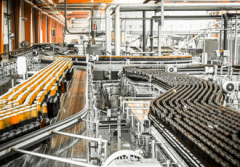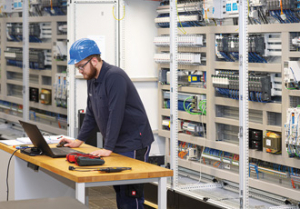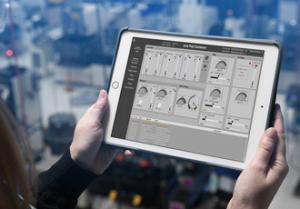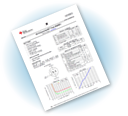Big data, little waste: delving into process issues

According to figures published by the Waste and Resources Action Programme (WRAP), up to nine percent of waste in the processed food sector can be attributed to machinery performance problems. Food manufacturing is a notoriously wasteful sector. Here, Lee Sullivan, Regional Manager at COPA-DATA UK, explains how manufacturers can use digital tools to tackle the issue.
The food industry is the epitome of high volume production with hundreds, if not thousands, of products manufactured by the minute. For the same reasons, waste is also commonplace through factors like spillage, wrongly-produced batches, product blockages and mechanical mishaps.
In line with WRAP’s findings, a recent study by Brunel University London and Ghent University, examined the production processes of 47 food manufacturers in Belgium. The study concluded a major root of the food waste problem is that manufacturers are not accurately calculating the quantity of ingredients needed for the final product. The same research says that, on average, manufacturers suffered a loss of one tonne of food for every 35 tonnes produced, due to factors like product defects and human error.
From an economic perspective, the cost of food loss in these companies could be as high as four percent of the turnover. WRAP also found that, when Morrisons supermarket and Kerry Moon, its supplier of ready meals, decided to better align their orders and production, they reduced £100,000 a year of ready meal waste. Such figures show the scale of the problem. Fortunately, automation software can be used to mitigate some of these issues.
Better data
What makes industrial automation software so helpful against these problems? Firstly, the capturing of data allows for better decisions. If a manufacturer isn’t capturing its production data, then it’s impossible to make educated judgements - or assess the situation - when things go wrong.
Consider this as an example. A frozen meal manufacturer has been forced to dispose of multiple batches of products because the food inside has spoiled. Due to a cancelled order from a supermarket, the manufacturer did not have the refrigeration space to store the product - but unfortunately, this wasn’t communicated in time to stop production.
This could have been avoided by using intelligent software. By vertically integrating Enterprise Resource Planning (ERP) data and customer orders with production, the plant operator could have been automatically alerted of the cancellation. Sharing this data in real time would allow output to be adjusted accordingly.
Powerful industrial automation software like this includes zenon, a platform developed by COPA-DATA. Through the use of zenon, food manufacturers can address two important factors that should be considered when using software to reduce food waste.
The first is real time analysis - as described in the above example. The software allows production operators to make decisions based on what is happening on site at that very moment, not only from order data, but from other areas of the production line too.
Bird’s eye view
Automation software can help detect potential problems on the production line in real time and link multiple machines together through a bird’s eye view. The operator can then ensure that all aspects of the production line are working in unison. Put simply, zenon can act as a glue between the machines. It also supports lean manufacturing, as the very concept of streamlining means having a better perspective of processes.
This better perspective can ensure that the right raw ingredients are used, for example, that raw materials 'A, B and C' are used in the right quantities. This reduces the risk of wrong judgements being made, and these changeovers can be automated to minimise errors that would otherwise cause waste.
Moreover, industrial automation software can support in spotting and understanding mistakes and using historical data to ensure they do not happen again. In other words, managers can use zenon to identify - here is the waste and that is the cause.
Check the record
Using zenon Analyser, the software’s dedicated reporting function, makes it possible to drill drown to the factors that are causing the losses - be it poor machinery performance or sub-optimal inventory management. Because zenon operates in real time, data is updating every step of the way.
In fact, using the zenon Process Recorder, which records everything as a simulation process, operators can then dial back to a precise moment that a fault occurred to better understand the error. Based on this, the operator can ensure that the right processes are set up next time around and therefore reduce future waste.
The right path
zenon can’t suggest how to fix the problem. No automation software can. Instead, the software can be essential in helping a manufacturer understand the problem and then tackle it in the best way possible. Going forward, there is also potential to combine zenon with other management systems, like action charts, to make waste reductions integral to the production process.
The nine percent of waste identified in WRAP’s report might seem like a big problem to overcome. Yet identifying the problem, in this case machinery performance, is the first step towards tackling it. This is where industrial automation software offers a powerful accomplice in reducing food waste - even in the world’s fastest and highest volume production lines.
Similar articles
More from COPA DATA UK LTD
- Secure architectures in smart factories 1st March 2021
- Automation trends: 6 steps to the connected factory 4th February 2021
- Ensuring security in developed production plants 7th December 2020
- Can software solve manufacturing's great planning crisis? 4th November 2020




 technology at Jacobs Vehicle Systems.JPG)







Write a comment
No comments